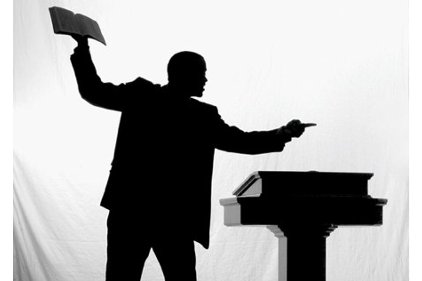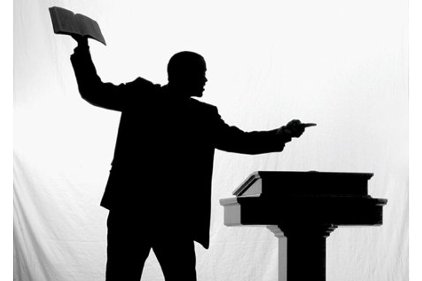 I hear a lot of complaints from safety professionals. Chief among them is that they are held accountable when other people get hurt. It’s a fair bone of contention. In so many workplaces, workers cut corners and whine about the inconvenience of the protections put in place to protect them, supervisors encourage unsafe behaviors, and operations leadership turn a blind eye to recklessness and noncompliance. But as soon as there’s an injury all the fingers point at the safety professionals, and an accusing eye is cast on the job done by the safety function. It’s a thankless job to be sure.
I hear a lot of complaints from safety professionals. Chief among them is that they are held accountable when other people get hurt. It’s a fair bone of contention. In so many workplaces, workers cut corners and whine about the inconvenience of the protections put in place to protect them, supervisors encourage unsafe behaviors, and operations leadership turn a blind eye to recklessness and noncompliance. But as soon as there’s an injury all the fingers point at the safety professionals, and an accusing eye is cast on the job done by the safety function. It’s a thankless job to be sure.
Is it fair to hold the safety professional accountable for every injury and near miss?
Hardly, but to be fair, there are those sanctimonious and sometimes ridiculous (I know a safety manager who lectures his constituency on proper condom use in his job as a safety manager at a large construction management company) safety professionals who claim single-handed responsibility for everything that goes right with safety and let’s face it, we can’t have it both ways: either our job saves lives or it doesn’t, we can’t claim responsibility on one hand and deflect blame on the other.
Everyone plays a role in safety, but unless we can clearly articulate what that role is we cannot expect people to accept responsibility for the role.
Role of the individual
Ask a safety professional and they will tell you that an individual has the responsibility to work safely, but how realistic is that?
This expectation implies working safely is always a choice.
The first responsibility of an individual is to do his or her job as prescribed without taking unjustifiable risks; this isn’t the same as working safely. Even the most diligent worker will make errors, take those risks that are culturally accepted (even demanded), and inadvertently drift from the standard.
So does this mean we can’t hold them accountable for allowing unsafe conditions to grow until the environment is so unsafe that injuries are all but an absolute certainty? Is it right to punish people for something they never intended just because they should have known better?
The role of the individual isn’t to work safely rather it is to actively and continually look for hazards and to report these hazards to their supervisor. Obviously, the individual must refrain from depraved indifference and recklessness, but these are responsibilities under the law and are in no way specific to the workplace.
Role of the supervisor
The first line supervisor has perhaps the most pivotal role in safety.
Because first line supervision has both intimate knowledge of the process and workplace and the authority to enforce safety protocols, the onus of safety falls chiefly on the shoulders of the supervisor.
This may sound unfair to some, but consider that the job of the supervisor is to support those in his or her charge. Supervisors are responsible for ensuring that the workers have all the tools to do their jobs safely. Supervisors are often required to make snap decisions and to modify the process when parts shortages, absenteeism, or equipment breakdowns threaten production and they have a responsibility to ensure that such ad hoc process variation doesn’t increase the risk of worker injuries.
Supervisors must always consider how their decisions and tweaks affect safety and must be trained to spot safety hazards, especially during nonstandard work. Supervisors must hold workers accountable for eliminating hazards, following safety procedures and policies, and making sound judgments rather than for the presence or absence of injuries.
Operations leadership
Operations leadership must value safety above production and reinforce the idea that work completed unsafely is not acceptable.
Operations leadership must do more than pay lip service to safety and when they are identifying the criteria for success they must make it clear that safety is of equal importance to quality, cost, and timing.
This is not to say that safety is our number one priority—it isn’t.
But operations leadership must be uncompromising in its message that it will not sacrifice safety (or delivery or quality for that matter) in the name of speed. Good operations leadership would never deliver an inferior product just to meet a delivery deadline, so too must they convince everyone believe that they will not allow workers to be exposed to unreasonable risks simply to meet a deadline.
It’s important to remember that all work carries with it some risk, and it is naïve to think that the risk of injury will not increase in work that is being completed out of process. Operations leadership must assess the risks associated with out of process work and ensure that these risks are known, mitigated, and closely managed.
Maintenance & facilities
One of the chief bottlenecks in making the workplace safer is invariably maintenance and/or facilities.
Identifying hazards is only a small part of the overall safety management process. Hazards must then be appropriately contained and permanently corrected. Unfortunately, when I have helped overhaul corporate cultures such that safety is appropriately managed, it almost always results in a bottleneck at maintenance or facilities.
Maintenance has a two-fold responsibility. First, it is responsible for making sure that it quickly and appropriately responds to the hazards reported to it by the larger organization. Next, it has to proactively prevent hazards by keeping machinery, vehicles, tools, equipment and facilities in good working order through a comprehensive Total Productive Maintenance (TPM) program. Another related responsibility is the monitoring of containment actions.
Far too often containment measures are put in place under the assumption that the measures will only be needed for a short time until a permanent solution is applied. Years later the containment is still in place and is typically only marginally effective.
Training
Whenever I mention the training department’s role in safety, people tend to nod their heads and move directly to a discussion about safety training. The training function should be directing its focus to the area of training that will have the most impact on the safety of the work: basic job function competency. The best defense against workplace injuries is a comprehensive job training that focuses on the skills the worker needs to do the basic tasks associated with the job.
Safety
The safety professional is responsible for informing and advising all other functions, not in a Cotton Mather-type sermon from the pulpit in the style of a stinging diatribe, but in bringing their specialized skills to bear in the most appropriate manner. The safety professional must be a coach and mentor, not parent or policeman.
Irrespective of industry, every job and every function plays a role in ensuring workplace safety, and everyone must be answerable when processes and protocols fail to keep workers safe.


Recent Comments
In addition to the personal hardship and loss...
No one will know the answer to this...
Bad drivers don't have to ruin your day...
Healthcare workers face a number of serious safety...
In my experience, truck drivers are treated with...